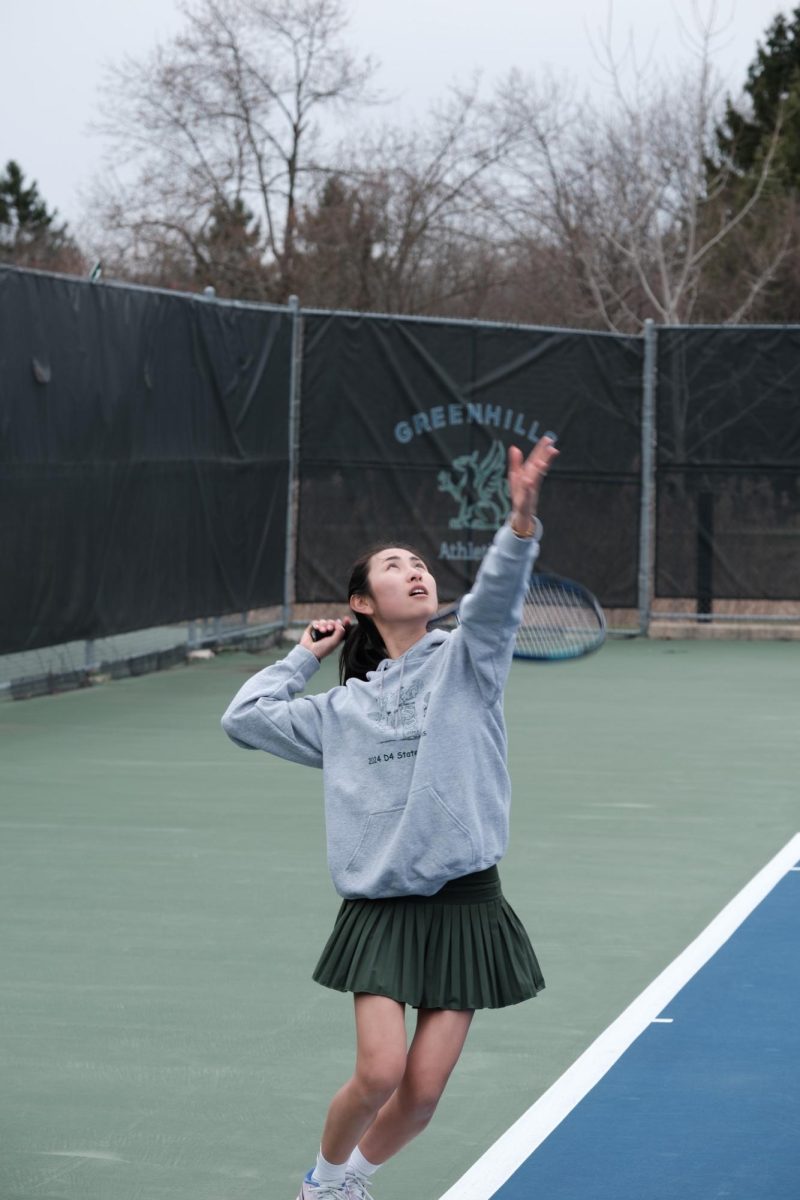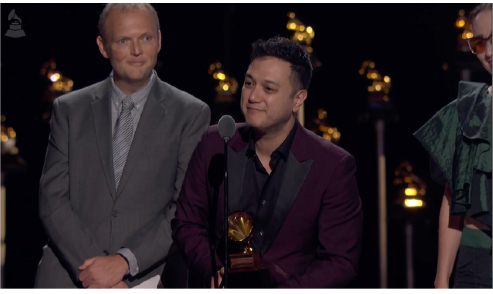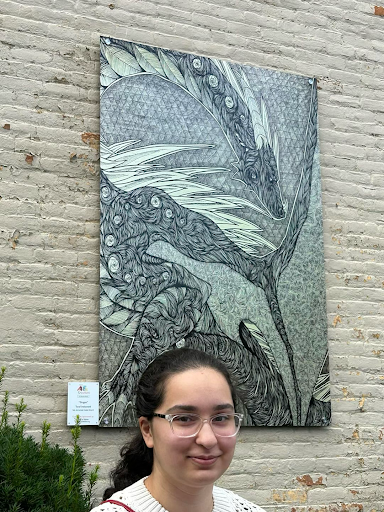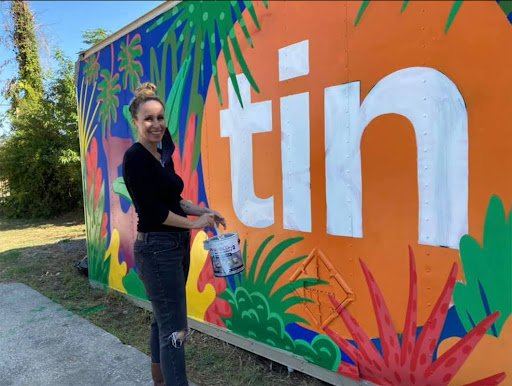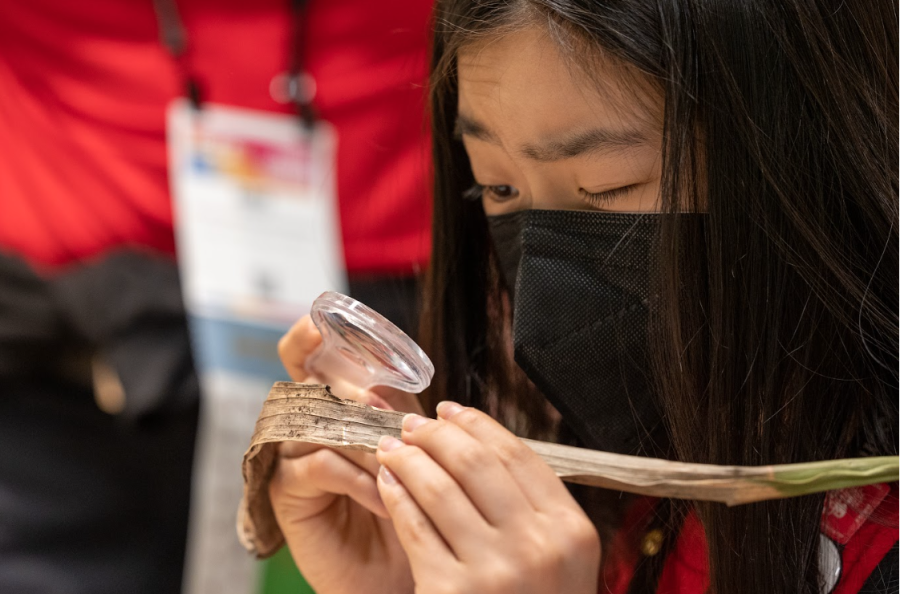Judy Bai and the science Fair
Freshman focuses scientific research on leukemia, lung disease, and COVID-19
Get a closer look Judy Bai ‘26 focusing on a experiment during Broadcom MASTERS. “You are randomly assigned to groups, you all have to work on a specific task and theres a different one ecah day,” said Bai.
May 24, 2023
From memorizing the periodic table to competing in science fairs all around Michigan Judy Bai ‘26 has continued to foster her love for science. Over the past couple of years Bai has been a consistent competitor going against students two to three years older than her. This past March, Bai received first place in a category competition during the Science and Engineering Fair of Metropolitan Detroit (SEFMD).
Bai’s interest in science and STEM began in elementary school. Bai’s father is a bioinformatics researcher and encouraged her to begin participating in fairs once she entered middle school.
Science fairs are competitions where students choose a topic that interests them and conduct research about it. Students then enroll in the fair where they go through a series of judging with the goal of winning awards. Research is worked on over the span of a couple of years. During the fair, booths are set up where students present their information or bring in trial experiments. The fairs compete at different levels, ranging from elementary, middle, and high school.
“I’ve always been a STEM nerd but once I started competing in fairs like Broadcom my love for science just escalated,” said Bai.
Bai’s first middle school division science fair was for SEFMD. This led to her being qualified for the 2021 Broadcom MASTERS science fair. Broadcom MASTERS is a program founded and produced by Society for Science. The purpose of the program is to find students interested in their research projects and have them share their work with other students who accepted.
Bai qualified for Broadcom MASTERS as a finalist. The finalists were selected from a pool of 1,841 entrants. Her research was about, “Computational Predictions of COVID-19 Risky Genes Associated with Lung Cancer.”
Bai’s research was influenced by her mother’s work with elderly patients with lung diseases. Bai learned that many of her mother’s patients had passed from COVID-19, this sparked an interest in whether there could be a link between the two.
“When I googled if there was an association, nothing came up, so then I knew I had to study if my prediction was true,” said Bai. “It became this big burning question for me.”
Before Bai experienced success with her research she faced a couple of struggles. From not getting the results she wanted to losing two years of work, she had to work through every problem thrown at her.
“Once I realized that I had been using the wrong data set for over a third of my work I was heartbroken, but my own motivation helped me solve the problem and get back on track,” said Bai. “This trial and error also allowed me time to work on my side projects which was nice because it can be stressful managing so many different projects.”
Bai’s other project is on childhood leukemia. Bai competed in the SEFMD during her 8th grade year as well with the basics of her leukemia research. During this year Bai made it to the international fair where she got the opportunity to sit in a seminar with 30 other students led by the CEO of Society for Science.
“It was such an interesting experience,” said Bai. “After she finished the seminar she introduced herself to all the applicants and spoke individually to us about our plans with our research.”
As Bai entered high school at Greenhills she was dedicated to continuing to compete in science fairs. Her first competition in the high school division was with the SEFMD. She worked as a team with a freshman from Skyline High School.
“I was pretty nervous at first going into the fair,” said Bai. “However there were a lot of amazing researchers so as the fair continued I felt better and enjoyed the great experience.”
Bai’s research surrounded “Characterization of Racial Disparities in Cancers by Predicting Bio Markers.” Her inspiration for her studies was because of an upward trend of racial disparities in cancer and her interest in a potential career in the medical field.
Due to Bai not being old enough to conduct her experiments in a lab she used research tools she had learned from research organizations like The Cancer Genome Atlas (TCGA). These tools allowed her to access resources that had cataloged the genetic mutations responsible for cancer. Bai said help came from Head of Upper School Deano Smith. Smith said he has been attending science fairs for the past couple of years. Smith, already familiar with the paperwork, would check in with Bai and help when needed.
“I was excited when I found out Judy was interested in attending the science fair,” said Smith. “It is a very energizing environment because everyone is into what is happening and geeking out about science.”
The competition consisted of two rounds of judging. If students passed both rounds then they were selected as an International Science and Engineering Fair (ISEF) finalist. Out of the two rounds Bai’s team made it past the first.
While Bai did not win any of the round awards she placed first in a category award. Organizations send judges who will offer awards based on categories students are participating in. Bai competed in computational biology and won an award from the US Agency of International Development (USAID).
Despite not placing as a finalist this year, Bai is interested in attending the SEFMD throughout high school. She will continue her research surrounding leukemia in children.






